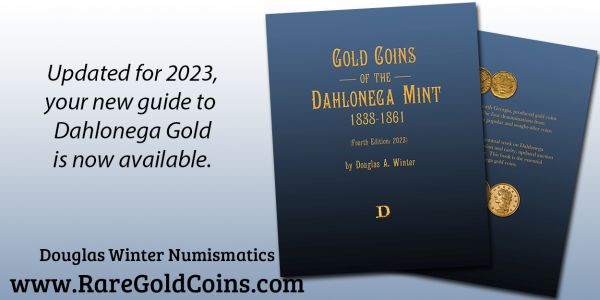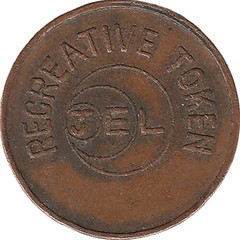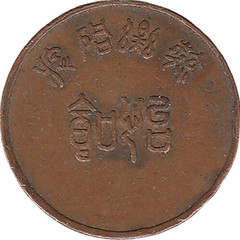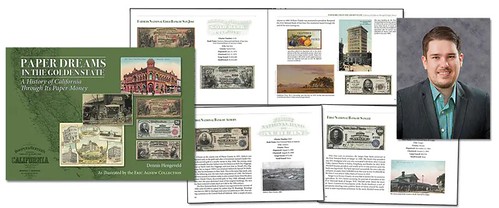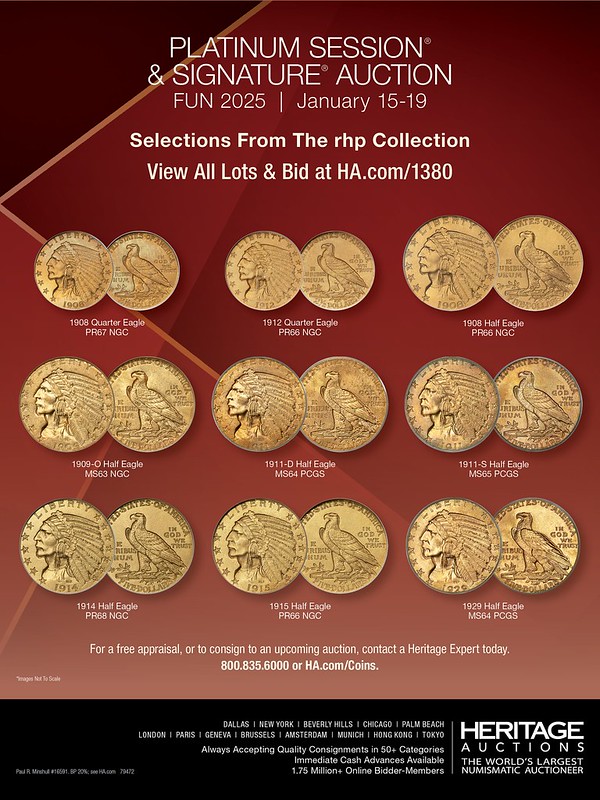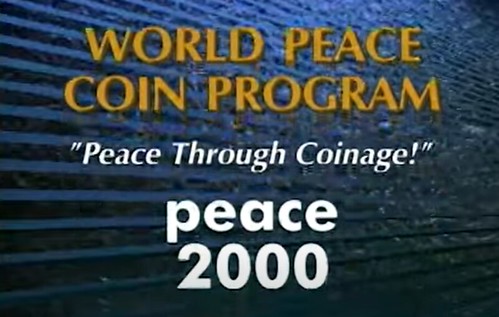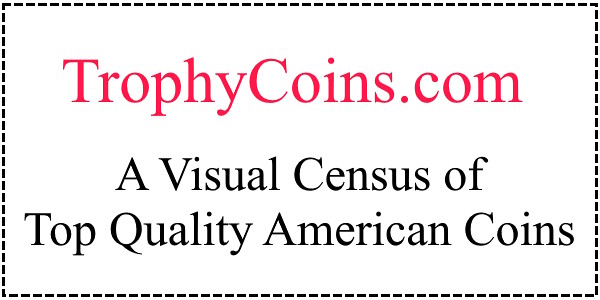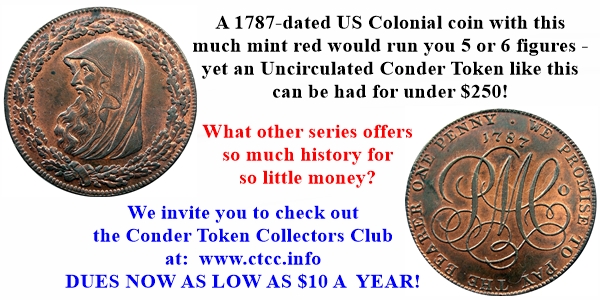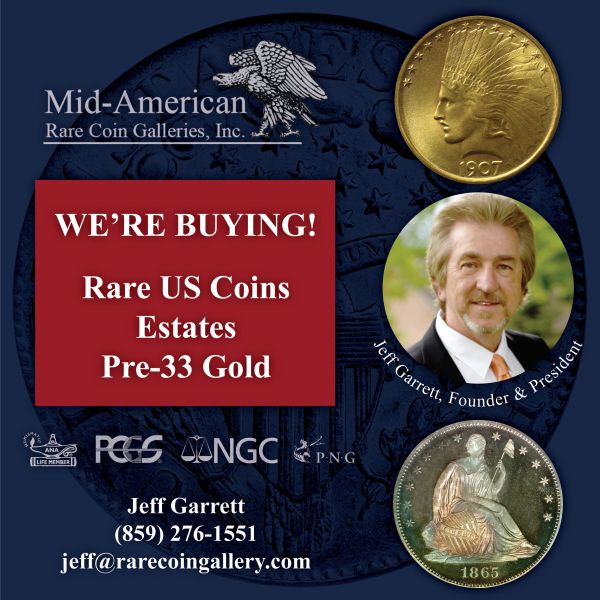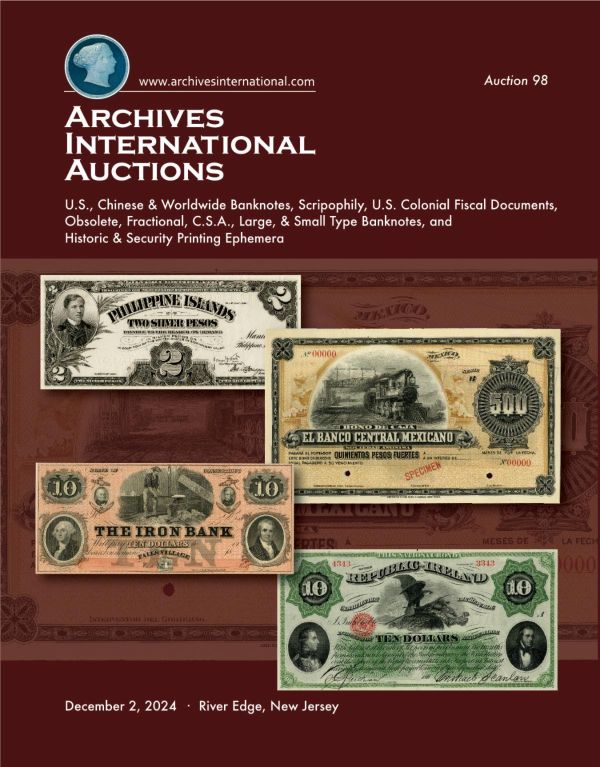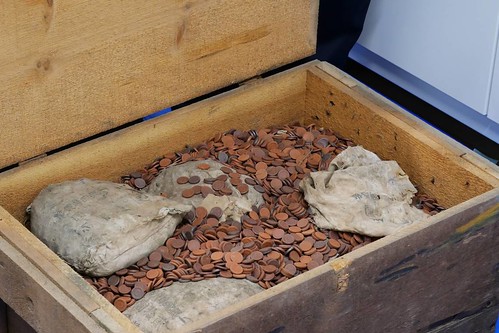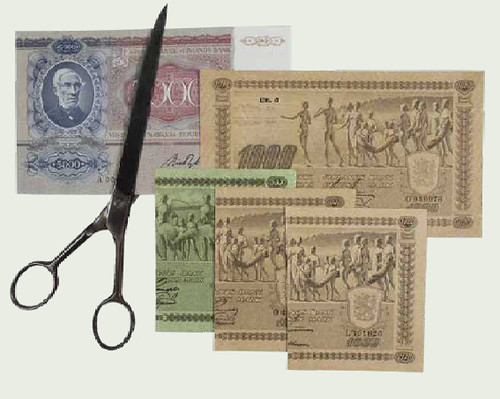
Visit our NBS Sponsors



About UsThe Numismatic Bibliomania Society is a non-profit association devoted to the study and enjoyment of numismatic literature. For more information please see our web site at coinbooks.org SubscriptionsThose wishing to become new E-Sylum subscribers (or wishing to Unsubscribe) can go to the following web page link MembershipThere is a membership application available on the web site Membership Application To join, print the application and return it with your check to the address printed on the application. Print/Digital membership is $40 to addresses in the U.S., and $60 elsewhere. A digital-only membership is available for $25. For those without web access, write to: Jeff Dickerson, Treasurer AsylumFor Asylum mailing address changes and other membership questions, contact Jeff at this email address: treasurer@coinbooks.org SubmissionsTo submit items for publication in The E-Sylum, write to the Editor at this address: whomren@gmail.com BUY THE BOOK BEFORE THE COINSale Calendar
|
- WAYNE'S WORDS: THE E-SYLUM NOVEMBER 17, 2024
- NEW BOOK: PICKING, PACKING AND SHUCKING
- NEW BOOK: SCRIP
- CHOPMARK PROVENANCE HELP SOUGHT
- TAIWAN TOKEN RESEARCH HELP SOUGHT
- PAPER DREAMS: AN AUTHOR'S PERSPECTIVE
- AM I NOT A MAN AND A BROTHER?
- VIDEO: WORLD COIN PEACE PROGRAM
- ANS EXECUTIVE DIRECTOR POSITION NAMED
- ANS EVALUATES NEW LOCATIONS
- NOTES FROM E-SYLUM READERS: NOVEMBER 17, 2024
- VOCABULARY TERM: PROVING
- COIN DEALER TEDDY KEITH THRUSH
- DR. LAWRENCE LEE INTERVIEW, PART ONE
- TIMELINE OF KEN BRESSETT'S 95 YEARS
- SOVEREIGN RARITIES AUCTIONS XV & XVI
- STACK'S BOWERS TO SELL AUGUST COLLECTION
- WAYNE'S NUMISMATIC DIARY NOVEMBER 17, 2024, PART ONE
- WAYNE'S NUMISMATIC DIARY NOVEMBER 17, 2024, PART TWO
- WWII 'PHANTOM' CERAMIC COINS FOUND IN JAPAN
- WHEN FINNS SNIPPED THEIR CASH IN HALF
- LOOSE CHANGE: NOVEMBER 17, 2024
- SAFE-DEPOSIT BOXES CONTINUE TO VANISH
- ABOUT THIS ISSUE: NOVEMBER 17, 2024
Content presented in The E-Sylum is not necessarily researched or independently fact-checked, and views expressed do not necessarily represent those of the Numismatic Bibliomania Society.
WAYNE'S WORDS: THE E-SYLUM NOVEMBER 17, 2024
 Thank you for reading The E-Sylum. If you enjoy it, please send me the email addresses of friends you think may enjoy it as well and I'll send them a subscription. Contact me at whomren@gmail.com anytime regarding your subscription, or questions, comments or suggestions about our content.
Thank you for reading The E-Sylum. If you enjoy it, please send me the email addresses of friends you think may enjoy it as well and I'll send them a subscription. Contact me at whomren@gmail.com anytime regarding your subscription, or questions, comments or suggestions about our content.
This week we open with two new books, research questions, updates from the Newman Numismatic Portal, the American Numismatic Society, notes from readers, and more.
Other topics this week include coal scrip, Hard Times Tokens, the World Coin Peace Program, Ken Bressett, Dr. Lawrence Lee, auction previews, two numismatic diary installments, phantom ceramic coins, and safe deposit boxes.
To learn more about picking strawberries, string beans, and tomatoes, chopmarks, F. M. Rose, California National Bank Notes, Syd Martin, Richard August, The Gold Frog, the International Primitive Money Society, die trials, Teddy Thrush and Jack Boozer, Milestone Coins, auction previews, the opening of the Suez Canal medal, error coins, slave hire badges, and Finland's setelinleikkaus, read on. Have a great week, everyone!
Wayne Homren
Editor, The E-Sylum
NEW BOOK: PICKING, PACKING AND SHUCKING
Mary Sears of the Maryland Token and Medal Society passed along information about a new book about the Polish packers in Baltimore. Many of these businesses issued tokens for their workers. Mary also provided the picker token images. Thank you. -Editor
The Migrant Experience of Baltimore’s Polish Community
by Thomas L. Hollowak
Picking, Packing, & Shucking: The Migrant Experience of Baltimore's Polish Community. Thomas L. Hollowak, 412 pages, illustrated, paper. $30.00 [ISBN 978-1-887124-32-4]
 Picking, Packing, & Shucking tells the story of Baltimore's Poles, who, during the spring and
summer, worked on farms in Maryland, Delaware, and Pennsylvania,
picking strawberries, string beans, and tomatoes. When the season
ended, they returned to Baltimore, where they worked in the
numerous packinghouses. Beginning in 1890, many traveled South,
shucking oysters in the canneries often established by Baltimore
packinghouse owners.
Picking, Packing, & Shucking tells the story of Baltimore's Poles, who, during the spring and
summer, worked on farms in Maryland, Delaware, and Pennsylvania,
picking strawberries, string beans, and tomatoes. When the season
ended, they returned to Baltimore, where they worked in the
numerous packinghouses. Beginning in 1890, many traveled South,
shucking oysters in the canneries often established by Baltimore
packinghouse owners.
While newspaper articles, government records and reports off some insights into the lives of those who toiled on farms, in packinghouse, and canneries, they are often contradictory, fragmented, and disparaging. This book, however, aims to rectify this by bringing together the various components of the migrant existence and allowing their voices to be heard. Thus taking these various strands to weave a tapestry of Baltimore's Polish immigrants and their families migratory experience.
NEW BOOK: SCRIP
Token and Medal Society Librarian Peter Irion mentioned this new book in his 'From the Bookshelf' column in the November-December 2024 issue of The TAMS Journal. Thanks! -Editor
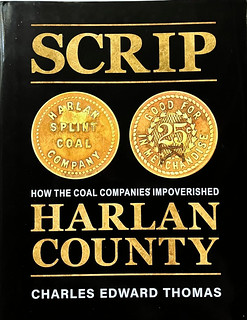 SCRIP: How the Coal Companies Impoverished Harlan County
SCRIP: How the Coal Companies Impoverished Harlan County
by Charles Edward Thomas
Photographs of 800 different pieces of coal scrip, all from Harlan County, Kentucky. In 1910, the L&N pushed its railroad into remote Harlan County, Kentucky, opening up access to billions of tons of coal, the fuel that ran everything during the Industrial Revolution. Coal did it Street lights from coal gas, coke for the steel mills, power for the new national electrical grid. The country's richest men and largest corporation rushed in-Ford Motor Company, U. S. Steel, Chicago Edison, International Harvester, Peabody Energy, the Mellons, the Carnegies, the Delanos, bringing with them a system they had Scrip.
What if you didn't have to pay the workers? Not really, not in cash? What if you could make your own currency and make it worth whatever you wanted to? Scrip was a system designed to pay workers in pinto beans and corn meal from the company store, and make billions in profits for the coal companies. "SCRIP" exposes how wage theft worked and left the coal counties impoverished.
CHOPMARK PROVENANCE HELP SOUGHT
Taylor Leverage submitted these notes on his current research project with a call for reader assistance. Can anyone help? -Editor
Chopmark Research: Seeking Journal of East Asian Numismatics, Vol. 2, No. 1 (Jan./Feb. 1995)
By: Taylor Leverage
Given the historically small collector base, most collections of chopmarked coins have been sold relatively quietly and without fanfare. There are exceptions - the Hal Walls Collection of World Trade Coins received a full catalog from Paul J. Bosco when it was sold in August 1997, and included an exceptional selection of chopmarked coins, such as the finest known 1878-CC Trade Dollar, a rare 1859-S Seated Dollar (one of an estimated five examples), and comprehensive sets of Mexican Pillar and Bust Eight Reales by date. However, the Walls Collection was an exception to the rule, and even that only provided plates for a select few pieces; collectors looking to trace the provenance of chopmarked coins today are often left trying to sift through scattered auction catalogs hoping for the odd reference here and there, such as the 1805-NG Guatemala Eight Reales shown here, which was plated as Lot 264 in Freeman Craig & Co. Mail Bid Auction 12 (November 14, 1984).
TAIWAN TOKEN RESEARCH HELP SOUGHT
James Contursi submitted this request for assistance with his research on some rare Taiwan tokens. Can anyone help? -Editor
E-Sylum readership has demonstrated time and again that its expertise extends into nearly every possible numismatic niche. Therefore, I hope I may be able to draw from the well of its collected wisdom. The tokens: RECREATIVE TOKEN / JEL // ???? / ??. One copper, the other nickel, both 20mm.
The tokens pictured are among the most coveted in Taiwan. Of course, they are rare, but part of their desirability rests on the nearly ubiquitous common belief that they were struck at the Central Mint of China (CMC, Taiwan)—I hasten to add, without any supporting documentation.
PAPER DREAMS: AN AUTHOR’S PERSPECTIVE
Author Dennis Hengeveld of Stack's Bowers published a blog post about his new book, Paper Dreams in the Golden State. -Editor
In the last few weeks, you may have seen the announcement and press release for the publication of my new book Paper Dreams in the Golden State: A History of California Through Its Paper Money, published by Stack’s Bowers Galleries. This volume, my first full length book, dives into the history of California using notes from the collection of Eric Agnew (which will continue to be sold in 2025 by Stack’s Bowers Galleries), along with hundreds of other illustrations, ranging from contemporary postcards, to newspaper articles and even mugshots. This blog post allows me to discuss the book a little bit more and explain why it is not just for collectors of paper money, but also for anyone who is interested in the history of California.
AM I NOT A MAN AND A BROTHER?
Newman Numismatic Portal Project Coordinator Len Augsburger provided the following report on the rare Low-54A "AM I NOT A MAN AND A BROTHER" Hard Times Token. -Editor
The AM I NOT A MAN AND A BROTHER Hard Times Token
The recent sale of the Low-54a Hard Times token, the AM I NOT A MAN AND A BROTHER variant, reminds us once again that "collectors don’t buy coins, they rent them." Of the four known pieces, at least seven auction appearances are identified since the Ford IV sale in 2004. Newman, Ford, and Partrick all owned examples (the same could be said of the Confederate half dollar), and these examples appeared on the market as these important collections were dispersed. Both the Newman and Ford pieces have traded hands at least once since their appearance in these respective sales.
VIDEO: WORLD COIN PEACE PROGRAM
The David Lisot Video Library on the Newman Numismatic Portal can be found at:
https://nnp.wustl.edu/library/multimediadetail/522852
We highlight one of his videos each week in The E-Sylum. This one was produced for the American Numismatic Association to promote the World Coin Peace Program discussed in earlier issues. Thanks to Newman Numismatic Portal Project Coordinator Len Augsburger for helping me locate this and related resources. -Editor
ANS EXECUTIVE DIRECTOR POSITION NAMED
The ANS Executive Director position has been named for Syd Martin. Here's the press release. -Editor
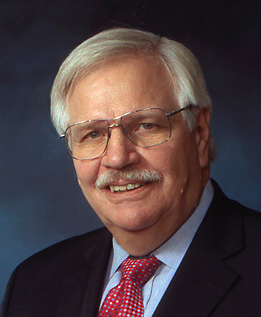 The American Numismatic Society (ANS) is honored to announce
the establishment of the Sydney F. Martin Executive Director. This recognition is made possible by a
generous leadership gift from the family of Sydney F. Martin, a former ANS President, who passed away in
January 2021. This gift celebrates the legacy of an exceptional numismatist whose dedication to the Society
spanned many years.
The American Numismatic Society (ANS) is honored to announce
the establishment of the Sydney F. Martin Executive Director. This recognition is made possible by a
generous leadership gift from the family of Sydney F. Martin, a former ANS President, who passed away in
January 2021. This gift celebrates the legacy of an exceptional numismatist whose dedication to the Society
spanned many years.
Sydney Martin was a successful entrepreneur and a lifelong learner with an unwavering love for history. In the numismatic community, he was celebrated for his remarkable collection of colonial coins, recently auctioned through Stack’s Bowers. An accomplished researcher, Martin authored numerous books and articles on colonial coinages. In recognition of his scholarly achievements, he was awarded the prestigious Archer M. Huntington Medal for Excellence in Numismatic Scholarship.
ANS EVALUATES NEW LOCATIONS
The American Numismatic Society has been evaluating potential new homes away from its historic (and unfortunately expensive) New York City base. Here's an excerpt of an article about a location under consideration in Fall River, Massachusetts - about an hour south of Boston and 20 minutes from Providence, RI. -Editor
 It was learned a few days ago that the City of Fall River may have a taker on the Bank Street Armory.
It was learned a few days ago that the City of Fall River may have a taker on the Bank Street Armory.
The City of Fall River initially wanted the armory to be converted into an arts and entertainment venue, but Main Street Property had stated that concept is financially prohibitive and would negatively impact the Narrows Center nearby.
Main Street Property planned to invest $13.6 million into developing the armory and had stated they would be open to designating 20% of the apartments as "affordable". Full details including diagrams can be viewed on the July 18, 2023 Fall River City Council agenda.
Fast forward to August.
NOTES FROM E-SYLUM READERS: NOVEMBER 17, 2024
Thoughts on Jim Barry
Sandy Pearl writes:
 "I was sorry to read of Jim Barry's passing. I've known Jim and Helen for years through the many encounters we've had at the FUN Show Original Hobo Nickel Society table and elsewhere. I was always impressed by their numismatic knowledge and their friendliness. Helen is a longtime member of OHNS and Jim always joined her in her hobby pursuits as she did in Jim's collecting adventures. A real nice couple.
"I was sorry to read of Jim Barry's passing. I've known Jim and Helen for years through the many encounters we've had at the FUN Show Original Hobo Nickel Society table and elsewhere. I was always impressed by their numismatic knowledge and their friendliness. Helen is a longtime member of OHNS and Jim always joined her in her hobby pursuits as she did in Jim's collecting adventures. A real nice couple.
"Jim will be missed by many and my condolences to Helen and their family."
To read the earlier E-Sylum article, see:
JAMES RICHARD BARRY (1936-2024)
(https://www.coinbooks.org/v27/esylum_v27n45a05.html)
Other topics this week include Haxby obsolete currency images, The Gold Frog, and the International Primitive Money Society. -Editor
VOCABULARY TERM: PROVING
Here's another entry from Dick Johnson's Encyclopedia of Coin and Medal Terminology. -Editor
Proving. Testing dies before they go into production. No matter whether a die is cut by hand or by machine, it is always useful to examine the die at each stage of production, often before it is cut any further, absolutely necessary before the die is hardened and before any items are struck from it. Thus proving occurs when the die is still capable of being improved – that is, while it is still in a soft state and further cutting can occur.
Proving hand engraved dies. Hand engravers like to examine the state of the die at frequent intervals while they are working on it. This is unnecessary for CAMEO DIES, since the hand engraver is cutting in the positive, but the engraver must frequently examine a negative die. This can be done with a quick impression in very soft material – wax, clay or plasticine – a ball of such plastic material is pushed into the negative relief while the die is still locked in the vise at the engraver's bench.
COIN DEALER TEDDY KEITH THRUSH
E-Sylum Feature Writer and American Numismatic Biographies author Pete Smith submitted this article on coin dealer Teddy K. Thrush. Thanks! -Editor
It often happens that I come across a story idea while looking for something else. This week I came across coin dealer Teddy K. Thrush. I thought his story had enough unusual elements to be interesting.
Thrush was born in Oklahoma on July 16, 1944, the son of "Teddy" Otho Lamore Thrush (1911- 1964) and Maudie Valeria Voyles Thrush (1910-1997). His father was a farmer and partner in Harris and Thrush Manufacturing Company.
In 1962, Teddy and his cousin, W. H. Voyles (1931-1988), set up the Big 12 Trailer Co. to manufacture cotton trailers. He was getting advice and probably financial support from his father.
DR. LAWRENCE LEE INTERVIEW, PART ONE
Greg Bennick's latest interview for the Newman Numismatic Portal is with museum curator and academic Dr. Lawrence Lee. Here's the first part, where Larry talks about which age group should be most actively targeted to become collectors. -Garrett
GREG BENNICK: Hi, everybody. This is Greg Bennick with the Newman Numismatic Portal, and I am here today to conduct another interview, this time with Dr. Lawrence J. Lee, museum curator, and I will be referring to Dr. Lee today as Larry. This is a casual and fun conversation about his background and connection to the coin hobby. Larry, how are you doing today?
DR. LAWRENCE LEE: Hey, Greg. How are you doing? Thanks for inviting me.
GREG BENNICK: Absolutely. Well, let's start off. Just give me a little backstory about your connection to the coin hobby. Have you always been a collector? Have you always been a researcher? A little bit of both? I'd love to know.
 DR. LAWRENCE LEE: Well, on my business card, I claim to be a professional numismatist, as I see there being a gradation between the coin collector, who is a hobbyist, and the numismatist, who is the scholar and who realizes that knowledge is important. The main difference is, to me, hobbyists usually don't buy many books besides The Red Book, whereas the more interested you become in numismatics or a subset thereof, the more numismatic books you have. You start becoming more and more of a numismatist rather than a hobbyist. So, I see it as a gradation, and so that's why I self-proclaim to be a professional numismatist.
DR. LAWRENCE LEE: Well, on my business card, I claim to be a professional numismatist, as I see there being a gradation between the coin collector, who is a hobbyist, and the numismatist, who is the scholar and who realizes that knowledge is important. The main difference is, to me, hobbyists usually don't buy many books besides The Red Book, whereas the more interested you become in numismatics or a subset thereof, the more numismatic books you have. You start becoming more and more of a numismatist rather than a hobbyist. So, I see it as a gradation, and so that's why I self-proclaim to be a professional numismatist.
GREG BENNICK: That's great. So, you've been a collector historically. How did you get your start in coins?
DR. LAWRENCE LEE: Well, I am the template for the 10 to 13-year-old boy who, just prior to puberty, some way or another becomes interested in coins. In this case, my grandmother's little box of pennies. And there was a 1916-D Lincoln cent in there that was bright and shiny, natural mint luster, I later learned. It was very high grade.
THE BOOK BAZARRE
TIMELINE OF KEN BRESSETT’S 95 YEARS
Republished here with permission is an article from the 75th Anniversary issue of NENA News with a timeline of the numismatic career of its early editor Ken Bressett. Thanks! I've changed the format from a table and added some illustrations. -Editor
The Timeline of Ken Bressett’s 95 Years (and counting)
 5-Oct-28: Ken Bressett born in Keene, NH
5-Oct-28: Ken Bressett born in Keene, NH
1937: Ken first starts to collect coins with coins given to him by his grandmother and a neighbor.
1947: Attended Dresser Business School - later studied Graphic Arts at U. of Wisconsin
1948-1951: Member of the New Hampshire National Guard
1949-1959: Worked for Sentinel Publishing Co. as a printer and compositor.
SOVEREIGN RARITIES AUCTIONS XV & XVI
Here's a final batch of selections from the upcoming Sovereign Rarities auctions. Some beautiful medals here, of great interest on both sides of the Atlantic. -Editor
On November 19, Sovereign Rarities will hold two sales, Auctions XV & XVI. Auction XV is a short sale of some of the highest quality historical medals to have been offered for some time, The Highcliff Collection, and many of the medals also boast significant provenances like Bute, O’Byrne, or are even Eimer plate medals.
Medals have an advantage over coins in that their size, and the more powerful presses used to strike them, mean engravers could more easily display work of great detail in high relief. For this reason they are often far more accomplished than coins. Portraits and condition were the inspiration for the collection and just some of the highlights include:
STACK’S BOWERS TO SELL AUGUST COLLECTION
In July we learned of the passing of colonial coin specialist Dick August. The press release announces upcoming sales of his collection by Stack's Bowers Galleries. -Editor
 More than 60 years in the making, the famous collection of Rhode Island numismatist
Richard August will be offered by Stack’s Bowers Galleries in a series of auctions in 2025 and 2026.
Known to his friends as Dick, August was a towering figure within the close-knit community of early
American coin and medal enthusiasts. He was a pioneer in the fields of Betts medals and colonial paper
money and an exacting builder of variety sets of most major pre-Federal copper series. Beginning decades
ago, Dick was an early adopter of collecting colonial-era coins from Europe’s New World empires
alongside coins more explicitly made for America. He came to focus on these coins with as much vigor as
on their Redbook-listed counterparts, amassing important collections of coins from Mexico, Guatemala,
Chile, Peru, Bolivia, and the West Indies. Selections from August’s incredibly choice collections of coins
from England, Ireland, and Scotland will be the first coins from the cabinet to be offered, slated for our
January 2025 New York International Numismatic Convention sale.
More than 60 years in the making, the famous collection of Rhode Island numismatist
Richard August will be offered by Stack’s Bowers Galleries in a series of auctions in 2025 and 2026.
Known to his friends as Dick, August was a towering figure within the close-knit community of early
American coin and medal enthusiasts. He was a pioneer in the fields of Betts medals and colonial paper
money and an exacting builder of variety sets of most major pre-Federal copper series. Beginning decades
ago, Dick was an early adopter of collecting colonial-era coins from Europe’s New World empires
alongside coins more explicitly made for America. He came to focus on these coins with as much vigor as
on their Redbook-listed counterparts, amassing important collections of coins from Mexico, Guatemala,
Chile, Peru, Bolivia, and the West Indies. Selections from August’s incredibly choice collections of coins
from England, Ireland, and Scotland will be the first coins from the cabinet to be offered, slated for our
January 2025 New York International Numismatic Convention sale.
Richard August was well known as a numismatist and was a fixture at shows all over the country for decades, particularly those in his native New England. Beyond his life in coins (a full-time passion since before he attended the University of Virginia in the late 1950s), Dick was a high-level math teacher and tutor, a distance runner and running coach, and a passionate practitioner of hobbies ranging from gardening to fish husbandry to shooting (he competed on the rifle team at UVa). His remarkable memory and knowledge base, as deep as it was broad, impressed his numismatic colleagues, but the collection his expertise allowed him to amass impressed his friends and rivals as well.
WAYNE'S NUMISMATIC DIARY NOVEMBER 17, 2024, PART ONE
On Tuesday night I eased into a parking spot at the Vienna (Virginia) Community Center. I'd brought a heavy box of giveaway literature for the Fairfax Coin Club, and a luggage cart would have come in handy. I stopped a couple times to set it down, but I did manage to haul it to the upstairs room where the club was meeting. I spread piles of recent numismatic periodicals and spare books on the freebie table.
I also had a large National album for mint sets and a handful of vintage coin boards. I gave those to Daryl Haynor for the club to auction or raffle off. But not before I showed the group to the evening's speaker, Greg Bennick of Seattle. As noted a couple issues back, Greg was here to speak on his numismatic specialty, error coins. Greg thought the Indian Cent board would be a nice gift for his father, and I gave it to him.
WAYNE'S NUMISMATIC DIARY NOVEMBER 17, 2024, PART TWO
On Thursday I worked half a day and after lunch headed up to Baltimore for the Whitman Coin Expo. I quickly ran into Greg Bennick near the Stack's Bowers table and the two of us headed over to Gerry Fortin's nearby table to speak with Len Augsburger about Greg's recent interviews for NNP. The one with Larry Lee is a must-read, and it starts in this issue.
I had a present for Len. Some months ago he'd given me his want list of American Journal of Numismatics issues, and on Monday I'd finally found time to rebox and inventory my stock of AJN back issues. I only had a single issue Len needed, but what an issue - these had come from the publisher's backstock, and the issue was clean, pristine and uncut, just as it had left the printer.
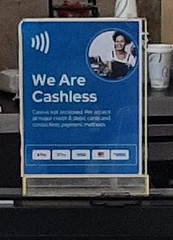 I was looking to speak with Chris Karstedt of Stack's Bowers and SBG President Brian Kendrella let me know I could find her at auction lot viewing. On my way I stopped at the food vendor in the lobby and learned that they wouldn't accept cash. When I pushed back on this, I could tell that it wasn't that first time the staff had gotten complaints. A coin show where your cash is no good. I was going to tip them a five dollar gold piece, but kept it in my pocket and gave them a credit card instead. They didn't have a good answer to my question - "So what are you going to do if the power goes out?"
I was looking to speak with Chris Karstedt of Stack's Bowers and SBG President Brian Kendrella let me know I could find her at auction lot viewing. On my way I stopped at the food vendor in the lobby and learned that they wouldn't accept cash. When I pushed back on this, I could tell that it wasn't that first time the staff had gotten complaints. A coin show where your cash is no good. I was going to tip them a five dollar gold piece, but kept it in my pocket and gave them a credit card instead. They didn't have a good answer to my question - "So what are you going to do if the power goes out?"
WWII 'PHANTOM' CERAMIC COINS FOUND IN JAPAN
A hoard of WWII-era Japanese ceramic coins has been found in a warehouse in Kyoto. -Garrett
Shofu Inc., a dental equipment manufacturer, found 15 wooden boxes filled with small pottery discs in a warehouse of Kyoto in August 2023, the Japanese outlet The Mainichi reported on Oct. 21.
The Japan Mint identified the unusual discs as a rare type of WWII currency known as "phantom" coins, according to an Oct. 18 Facebook post. Photos show the reddish brown coins.
"Phantom" coins or "phantom" currency are an unusual type of Japanese Yen coin made of ceramic during the metal shortages of WWII, according to an FAQ page from the Japan Mint. Mass production of these coins began in July 1945 but stopped roughly a month later due to the end of the war. The ceramic coins were never issued but were destroyed instead, leading to their ghostly nickname.
In total, about 15 million ceramic coins were made, mint officials said in a news release. The recently rediscovered boxes likely contain over 500,000 of these coins.
WHEN FINNS SNIPPED THEIR CASH IN HALF
In this blog post, economist JP Koning discusses the practice of banknote cutting in Finland, required by the government to avoid rampant inflation. Due to wartime price controls and rationing, Finns had significant forced savings. Production of consumer goods was also low because of militarization and the bombing of factories. The combination of these factors would lead to large-scale inflation once Finns spent this money. -Garrett
On the last day of 1945, with World War II finally behind it, Finland's government announced a new and very strange policy.
All Finns were required to take out a pair of scissors and snip their banknotes in half. This was known in Finland as setelinleikkaus, or banknote cutting. Anyone who owned any of the three largest denomination Finnish banknotes — the 5000 markka note, the 1000, or the 500 — was required to perform this operation immediately. The left side of the note could still be used to buy things, but at only half its value. So if a Finn had a 1000 markka note in their wallet, henceforth he or she could now only buy 500 markka worth of items at stores. As for the right side, it could no longer be spent and effectively became a bond (more on this later).
Setelinleikkaus was Finland's particular response to the post-War European problem of "monetary overhang," described in a 1990 paper by economists Rudi Dornbusch and Holger Wolf. After many years of war production, price controls, and rationing, European citizens had built-up a substantial chest of forced savings, or involuntary postponed consumption, as Dornbusch & Wolf refer to it. With WWII now over, Europeans would soon want to begin living as they had before, spending the balances they had accumulated on goods and services. Alas, with most factories having been configured to military purposes or having been bombed into dust, there wasn't nearly enough consumption items to make everyone happy.
LOOSE CHANGE: NOVEMBER 17, 2024
Here are some additional items in the media this week that may be of interest. -Editor
With the connection of numismatics to money, commerce, manufacturing, art, politics and more, it's not surprising (to a well-read numismatist, anyway) that numismatic connections can appear almost anywhere. How about it the common phrase "Costs an Arm and a Leg"? -Editor
When you say something "costs an arm and a leg," you’re implying that the item is prohibitively expensive. But why do we reference those body parts instead of, say, "an ear and an eye" or "a toe and a tongue"? The idiom’s origins are somewhat murky, and one of the earliest uses comes without much context. In 1576, an English translation of a Philippe de Mornay work about life and death made mention of how long and tedious actions may come "at the cost of an arme or a leg." The topic of the work implies the initial definition was more literal, and it had less to do with finances.
Another, albeit possibly apocryphal, theory dates back to 1680, when England’s Charles II asked Sir Thomas Armstrong and Colonel George Legge to manufacture regal coinage for use in the Irish colony. This aspect of the story is historical fact, but it’s an unconfirmed rumor that people would colloquially say that an item with a purchase price of a halfpenny "cost an Arm and a Legge," referring to the surnames of the two men who produced the coins. This is in no way verified, though it’s one of the more widely professed origin stories behind the idiom.
To read the complete article, see:
Why Do We Say "Costs an Arm and a Leg"?
(https://wordsmarts.com/costs-arm-leg/)
Other topics this week include the 1925 Canada Cent, and Dangerous Dollar Bills. -Editor
SAFE-DEPOSIT BOXES CONTINUE TO VANISH
We've discussed this topic before, and the situation continues to worsen. What are readers experiencing? -Editor
 Good luck getting a safe-deposit box.
Good luck getting a safe-deposit box.
Longtime deposit-box renters are getting kicked out of their boxes by banks that are shutting down or scaling back the service. Customers say they have been struggling to find the small boxes traditionally kept inside vaults to store family heirlooms and other valuables.
Kris Wall called 13 branches around the San Francisco Bay Area over the past 18 months, and visited another six or seven, in her unsuccessful search for new boxes. The 49-year-old gemologist and jeweler uses them to store her work, but was told to vacate her extra-large box at a First Republic branch last year.





